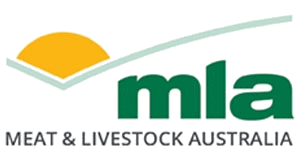Subscribe to R&D Round-Up newsletter
Stay informed with a short, sharp monthly summary of MLA’s latest research reports.
Transportation
When transporting livestock, it is essential that they are managed in a way that reduces stress and minimises any risks to animal welfare.
Producers must understand their roles and responsibilities when transporting livestock. Producers need to comply with the Animal Welfare Standards and Guidelines for the land transport of livestock and relevant state and territory legislation.
The Livestock Transport Standards outline the standards and what producers must do to comply with them.
Preparing stock for transport
Livestock should be adequately prepared for a journey. Livestock stress in transport is cumulative and animals that are already stressed travel poorly. Preparing livestock well for transport helps ensure they are in good condition on arrival and reduces skin staining, bruising, downers and deaths.
The key points when preparing livestock for travel are:
- Plan for the trip.
- Avoid extremes of weather.
- Check the holding and loading yards and loading ramp to make sure they are adequate.
- Use low-stress handling techniques.
- Don't carry out highly stressful activities just before loading, including crutching, dipping, drenching and dehorning.
- Ear tagging prior to loading for transport should be limited to those animals that have lost an NLIS tag.
- Only present livestock that are fit to travel.
- Sick, injured, severely lame, weak or emaciated animals unable to keep up with the mob, blind and heavily pregnant animals should not be transported.
- Yard the livestock before loading, preferably overnight to allow them to settle.
- Segregate livestock appropriately for loading and travel.
- Hold stock off feed and water for 8-12 hours prior to transport if possible.
- Strict maximum times off water apply and producers must remember that time off water prior to loading is part of the maximum time off water for the intended journey.
- Use a professional livestock carrier who is accredited by TruckSafe Animal Welfare.
- Be careful with drought-affected livestock and move them early rather than when feed levels are so low they can't be properly prepared for transport.
- Load livestock to the approved density only.
- Remember, when using a professional livestock carrier, the driver has the final say.
- Make sure all movement documents and paperwork travelling with the livestock is complete and signed, for example an LPA NVD/Waybill, Animal Health Declarations, Dairy BJD Assurance Score Declaration Form, Travelling Stock Statement or Waybill.
More information
- Module 3: Industry Obligations from MLA's Going into Goats: Profitable producers' guide
- Is the animal fit to load? (revised edition May 2019 national version)
- MLA Tips & Tools: Minimising land transport stress in live export Brahman steers


